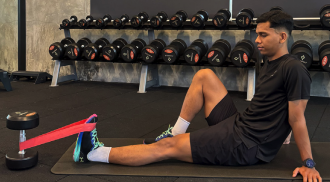In our ongoing series on injury management and recovery, we explore common injuries, their causes, symptoms, and treatments. Today, we focus on shin splints, examining their nature and symptoms, as well as practical exercises and treatments for recovery and improved mobility. Whether your goal is to stay healthy, enhance physical performance, or recover quickly from injuries, our guide is here to help. Let’s get started.
Understanding Shin Splints
Shin splints, medically known as Medial Tibial Stress Syndrome (MTSS), are a common condition characterized by pain along the inner edge of the shinbone (tibia). This pain typically occurs during or after physical activity and is often associated with overuse or repetitive stress on the lower leg muscles and tendons. Shin splints are particularly prevalent among athletes and individuals who engage in highimpact sports or activities that involve a lot of running or jumping.
Signs and Symptoms
The primary symptom of shin splints is a dull, aching pain along the inner part of the shinbone. This pain may:
• Worsen with physical activity, pain reduced with rest.
• Mild oedema (swelling) in the lower leg.
• Progress to a sharper or more severe pain if not managed properly.
• Tenderness on palpation over shin bone.
In severe cases, shin splints can lead to stress fracture if left untreated.
Types of Management
Generally, shin splints are treated conservatively focusing on using rest and activity modification exercises.
• Heat therapy: Placing ice pack or hot pack over affected area for 10-15 minutes can help to reduce pain
• Managing the load and activity modification: Cut back on training intensity, or temporarily stop the activities all together if pain is presented during day to day activities like walking or climbing up and down stairs. Instead, maintain cardiovascular fitness via low impact or nonimpact exercises like cycling and swimming.
• Foot wear: using appropriate footwear and shock-absorbing insoles with pronation control can help alleviate stress on the shin.
• Physical therapy management: Patient education, reducing pain , improving flexibility, loaded exposure program, gait and biomechanical analysis are.
Exercises
The following exercises are designed to help reduce pain, restore flexibility, strengthening the muscles surrounding the shin and reduce likelihood of future occurrences. Stop immediately if the pain becomes unbearable.
WARNING: Perform all exercises carefully and within your pain tolerance.
Strengthening Exercise: Resisted Dorsiflexion
Sit on the floor with your legs extended. Loop a resistance band around the ball of your foot and pull the band towards you while flexing your ankle upward.
Range of Motion Exercises: Ankle Circles
Sitting or lying down, rotate your ankle in a circular motion, first clockwise and then counter clockwise. Watch the video below:
Stretching Exercise: Tibialis Anterior Stretch
Sit on the floor with your legs extended. Point your toes downward and use a towel or resistance band wrapped around your foot to gently pull the toes towards you, stretching the muscles along the front of the shin. Watch the video below:
Strengthening Exercise: Resisted Dorsiflexion
Sit on the floor with your legs extended. Loop a resistance band around the ball of your foot and pull the band towards you while flexing your ankle upward. Watch the video below:
Conclusion
Shin splints are a common yet preventable condition that can significantly impact an individual’s ability to participate in physical activities. By understanding the causes, recognizing the symptoms, and implementing appropriate management strategies, including physiotherapy, individuals can effectively manage and prevent shin splints. A combination of rest, proper footwear, and targeted exercises can help alleviate pain, improve function, and reduce the likelihood of recurrence. For those affected by shin splints, consulting with a physiotherapist can provide tailored guidance and support for a successful recovery.
Shikin is a fitness coach and physiotherapist at Pinnacle Fitness. She holds a Bachelor’s Degree in Sports Science (Exercise Science) and a Diploma in Physical Therapy. For more information, please contact us at 010-652 6526 or info@pinnacle.net.my.




